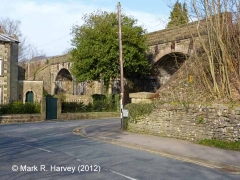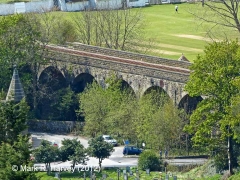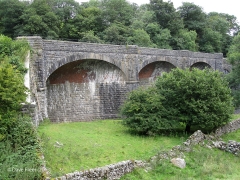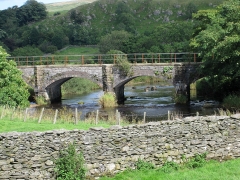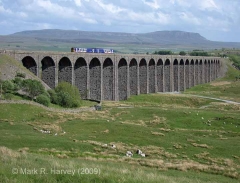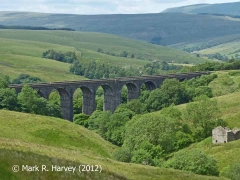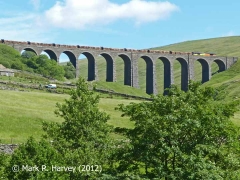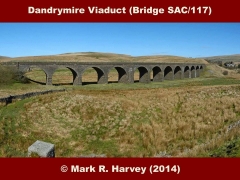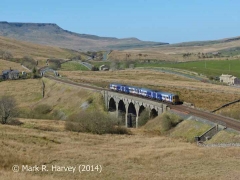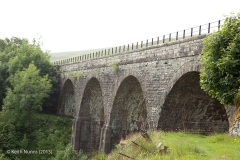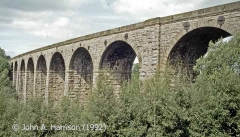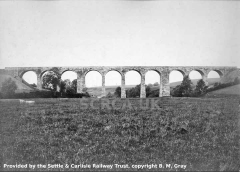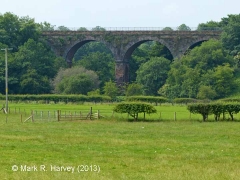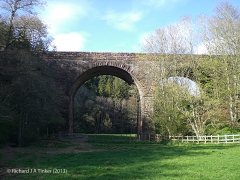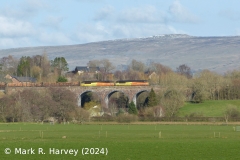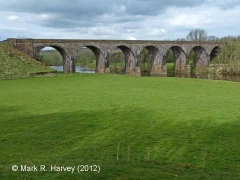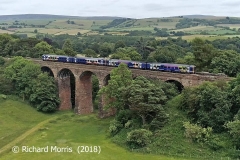A viaduct is simply a particularly long version of a Bridge (Underline) - i.e. a bridge under (beneath) the railway tracks. Railway viaducts carry (or were originally built to carry) a railway line across a valley or other stretch of ground that is lower than the level of the railway. Embankments (long, thin ridges of made-up ground) can also be used for this purpose, but viaducts can be more stable than high embankments and they occupy a smaller area. Furthermore, the space beneath viaduct spans can be used for other purposes, even if it's just for grazing or access.
For the purposes of the SCRCA Project, any bridge under the railway that has more than three distinct and immediately adjacent spans is classified as a viaduct. However, two 3-arch underline bridges (Sheriff Brow Viaduct / Bridge SAC/27 and Little Viaduct / Bridge SAC/28) have also been classified as viaducts because the word 'viaduct' appears in their commonly used names.

